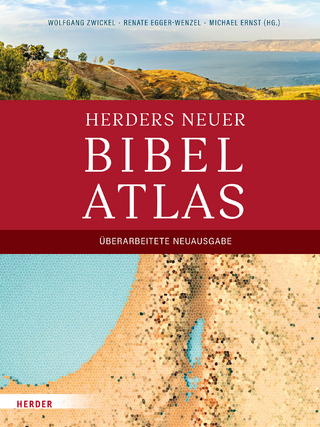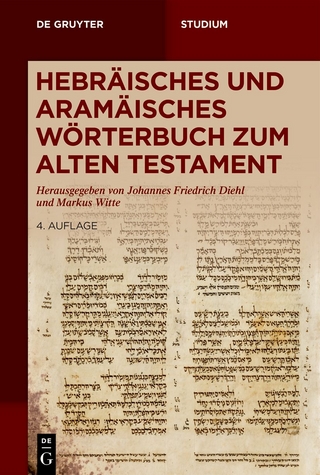
The Jewish Family Ethics Textbook
Jewish Publication Society (Verlag)
978-0-8276-1323-2 (ISBN)
2021 National Jewish Book Award Finalist for Contemporary Jewish Life and Practice
Judaism offers us unique—and often divergent—insights into contemporary moral quandaries. How can we use social media without hurting others? Should people become parents through cloning? Should doctors help us die?
The first ethics book to address social media and technology ethics through a Jewish lens, along with teaching the additional skills of analyzing classical Jewish texts, The Jewish Family Ethics Textbook guides teachers and students of all ages in mining classical and modern Jewish texts to inform ethical decision-making. Both sophisticated and accessible, the book tackles challenges in parent-child relationships, personal and academic integrity, social media, sexual intimacy, conception, abortion, and end of life. Case studies, largely drawn from real life, concretize the dilemmas. Multifaceted texts from tradition (translated from Hebrew and Aramaic) to modernity build on one another to shed light on the deliberations. Questions for inquiry, commentary, and a summation of the texts’ implications for the case studies deepen and open up the dialogue.
In keeping with the tradition of maḥloket, preserving multiple points of view, “We need not accept any of our forebears’ ideas uncritically,” Rabbi Neal Scheindlin explains. “The texts provide opportunities to discover ideas that help us think through ethical dilemmas, while leaving room for us to discuss and draw our own conclusions.”
Rabbi Neal Scheindlin is an adjunct lecturer in rabbinics and biblical commentaries at Hebrew Union College–Los Angeles and the Ziegler School at American Jewish University. For eighteen years he taught and developed curriculum in Jewish law and ethics at Milken Community Schools.
Preface
Acknowledgments How to Use This BookUsing the Book in a Classroom Setting
Using the Book without a Teacher Introduction Theories of Ethical Decision Making
How Jews Approach Ethical Problems
Works and History of Classical Jewish LiteratureText 1—Deut. 17:8–11A Brief Jewish LexiconText 2—Eiruvin 13bClassical Literature as Understood by Modern Jews 1. Parents and Children Case Study #1: Who Chooses Where to Go to College?
Case Study #2: Caring for a Parent with Dementia
Case Study #3: Distancing from an Abusive Parent
Text Study #1: Children’s Twin Obligations to Parents—Honor and ReverenceText 1a—Exod. 20:12
Text 1b—Deut. 5:16
Text 2—Lev. 19:3
Text 3—Mekhilta, Massekhta de-BaHodesh 8
Text 4a—Kiddushin 30b
Text 4b—Kiddushin 30b (continued)
Text 5—Kiddushin 30b–31aText Study #2: The Mitzvot Children Owe to ParentsText 6—Kiddushin 31b
Text 7a—Shulḥan Arukh, Yoreh De’ah 240:21
Text 7b—Rashi on Lev. 19:3
Text 7c—Mishneh Torah, Laws of Rebellion 6:11
Text 8a—Shulḥan Arukh, Yoreh De’ah 240:4–5
Text 8b—Mishneh Torah, Laws of Rebellion 6:12
Text 8c—Golinkin, “Institutionalizing Parents with Alzheimer’s Disease”
Text 9a—Kiddushin 31a–b
Text 9b—Mishneh Torah, Laws of Rebellion 6:9
Text 9c—Mishneh Torah, Laws of Rebellion 6:10
Text 9d—Mishneh Torah, Laws of Rebellion 6:11 (continued)
Text 10a—Midrash Tanhuma Eikev 3
Text 10b—Kiddushin 31b
Text 11a—Dorff, Love Your Neighbor as Yourself
Text 11b—Diamant, Choosing a Jewish LifeText Study #3: Parents’ Responsibilities to ChildrenText 12a—Kiddushin 29a
Text 12b—Nevins, “Between Parents and Children”
Text 13—Kiddushin 29a–bText Study #4: Problems in the Parent-Child RelationshipText 14—Shulḥan Arukh, Yoreh De’ah 240:18
Text 15—Dratch, “Honoring Abusive Parents”
Text 16a—Jacob, “Responsibility of Children to Their Parents”
Text 16b—Nevins, “Between Parents and Children”Conclusion 2. Honesty Case Study #1: Cheating on an Exam
Case Study #2: Potential Plagiarism
Case Study #3: Withholding Part of the Truth from a Prospective Employer
Text Study #1: Truth Telling and Its LimitsText 1a—Exod. 20:13
Text 1b—Exod. 23:7
Text 1c—Lev. 19:11
Text 1d—Mecklenburg, HaKetav VeHaKabbalah on Exod. 23:7Text 2—Ketubot 16b–17a
Text 3a—Yevamot 65b
Text 3b—Bava Metzia 23b–24a
Text 3c—Mishnah Nedarim 3:4Text Study #2: Whistleblowing and RebukeText 4—Tosefta Bava Kama 7:3
Text 5a—Leff, “Whistleblowing”
Text 5b—Lev. 19:17
Text 5c—Mishneh Torah, Laws of Personal Qualities 6:7
Text 5d—Lev. 19:14
Text 5e—Sifra Kedoshim 2:14
Text 6—Shulḥan Arukh, Hoshen Mishpat 388:9Text 7—Mishneh Torah, Laws of Robbery and Lost Objects 11:3Text Study #3: Crediting Others for Use of Their Intellectual PropertyText 8—Tanhuma Bemidbar 22
Text 9a—Gittin 10b
Text 9b—Berakhot 5b
Text 9c—Tosefta Bava Kama 7:3
Text 10a—Deut. 19:14
Text 10b—Bava Batra 21b
Text 11a—Shulḥan Arukh, Hoshen Mishpat 203:1
Text 11b—Arukh HaShulḥan, Hoshen Mishpat 212:3Text 11c—CCAR Responsum, “Copyright and the Internet”Conclusion 3. Social Media Case Study #1: Social Media Insults
Case Study #2: Online Privacy
Text Study #1: Permitted and Forbidden SpeechText 1a—Lev. 19:16
Text 1b—Rashi on Lev. 19:16
Text 2—Arakhin 15b
Text 3a—Mishneh Torah, Laws of Personal Qualities 7:2
Text 3b—Hafetz Hayyim 1:8
Text 3c—Hafetz Hayyim 3:3
Text 4—Yoma 4b
Text 5—Hafetz Hayyim 10:1
Text 6—Student, “A Torah Guide for the Digital Age”Text Study #2: PrivacyText 7—Mishnah Bava Batra 3:7; Bava Batra 60a
Text 8a—Kurshan, Comments on Bava Batra 2a–b
Text 8b—Dorff, Love Your Neighbor and Yourself
Text 8c—Samlan, “The Ten Commandments of Social Media”Conclusion 4. Sex and Intimacy Case Study #1: Four Ideas about Jewish Sexual Ethics
Case Study #2: LGBTQ Orientations
Text Study #1: The Two InclinationsText 1a—Gen. 1:31
Text 1b—Ramban, Iggeret HaKodesh
Text 2—Genesis Rabbah 9:7Text Study #2: Sex within MarriageText 3—Mishnah Ketubot 5:6; Ketubot 62b
Text 4—Nedarim 20a–b
Text 5a—Eiruvin 100b
Text 5b—Shulḥan Arukh, Even HaEzer 25:2Text Study #3: The Power of Sexual DesireText 6—Kiddushin 81a
Text 7a—Mishnah Kiddushin 1:1
Text 7b—Yevamot 61b
Text 7c—Gittin 81b
Text 7d—Mishneh Torah, Laws of Marriage 1:4Text Study #4: Sexual ValuesText 8a—Birkat Eirusin, Betrothal Blessing from the Wedding Ceremony
Text 8b—Blessing Six of the Wedding Ceremony
Text 9a—Novak Winer, Sacred Choices
Text 9b—Salkowitz, “Reform Jewish Sexual Values”
Text 10—Plaskow, Standing Again at SinaiText Study #5: LGBTQ SexualityText 11a—Lev. 18:22
Text 11b—Lev. 20:13
Text 12—Sanhedrin 54a–b
Text 13a—Shulḥan Arukh, Even HaEzer 24:1
Text 13b—Bayyit Ḥadash on Even HaEzer 24:1
Text 14a—Nedarim 51a with Rashi’s commentary
Text 14b—Torah Temimah on Lev. 18:22
Text 14c—Havrelock, “Acharei Mot: Boundaries of Rituals: The Sanctuary and the Body”
Text 15—Mishneh Torah, Laws of Intercourse 21:8Text 16—Berakhot 19b
Text 17—Dorff, Nevins, and Reisner, “Homosexuality, Human Dignity and Halakhah”
Text 18—Reconstructionist Commission on Homosexuality, “Homosexuality and Judaism”
Text 19—Litman, “‘Bisexual’ Identity: A Guide for the Perplexed”Conclusion 5. Medical Ethics at the Beginning of Life Case Study #1: Who Counts as a Parent?
Case Study #2: Choosing Single Parenthood
Case Study #3: Surrogate Motherhood
Case Study #4: Parenthood through Cloning
Text Study #1: The Mitzvah of ProcreationText 1—Gen. 1:27–28
Text 2—Yevamot 63b
Text 3—Mishnah Yevamot 6:6
Text 4—Dorff, Matters of Life and Death
Text 5a—Jacob, “Jewish Marriage without Children”
Text 5b—Panitz, “Must a Jew Have Children? A Conservative Answer”Text Study #2: Assisted Reproductive TechnologiesText 6—Hagigah 14b–15a
Text 7—Mishneh LaMelekh on Mishneh Torah, Laws of Matrimony 15:4
Text 8a—Ramban on Lev. 18:20
Text 8b—Waldenberg, Responsa Tzitz Eliezer
Text 9—Broyde, “The Establishment of Paternity in Jewish and American Law”
Text 10—Grossman, “Choosing Parenthood”Text Study #3: Surrogate MotherhoodText 11a—Gen. 16:1–4,15
Text 11b—Gen. 30:1–6
Text 11c—Spitz, “On the Use of Birth Surrogates”
Text 12a—Gellman, “The Ethics of Surrogate Motherhood”
Text 12b—Freundel, Contemporary Orthodox Judaism’s Response to Modernity
Text 12c—Jakobovits, Jewish Medical Ethics
Text 13a—Jacob, “Surrogate Mother”
Text 13b—Spitz, “On the Use of Birth Surrogates”
Text 13c—Loike and Tendler, “Gestational Surrogacy”
Text 13d—State of Israel Ministry of Health, “Surrogacy in Israel”Text Study #4: Parenthood through CloningText 14—Sanhedrin 65b
Text 15a—Menachem HaMeiri on Sanhedrin 67b
Text 15b—Ashkenazi, Responsa Hakham Tzvi 93
Text 16—Mishnah Sanhedrin 4:5
Text 17—Waldenberg, Responsa Tzitz Eliezer
Text 18—Grazi and Wolowesky, Overcoming InfertilityConclusion 6. Abortion Case Study #1: Fetal Reduction of Twins
Case Study #2: Abortion of a Fetus with a Deficit
Case Study #3: When Contraception Fails
Text Study #1: Halakhic Status of the FetusText 1a—Exod. 21:12
Text 1b—Exod. 21:22–23
Text 2—Mishnah Ohalot 7:6
Text 3a—Exod. 22:1–2
Text 3b—Rashi on Exod. 22:1–2
Text 3c—Sanhedrin 73b
Text 4—Sanhedrin 72bText Study #2: Two Approaches to Abortion EthicsText 5a—Rashi on Sanhedrin 72b, s.v. “If its head came out”
Text 5b—Mishneh Torah, Laws of Murder and Preservation of Life 1:9Text Study #3: Fetal PersonhoodText 6—Arachin 7a
Text 7—Sanhedrin 84b
Text 8a—Central Conference of American Rabbis, Resolution on Abortion
Text 8b—Agudath Israel of America, National Public Policy Position Paper
Text 9—Feldman, “Abortion: The Jewish View”
Text 10—Bleich, Judaism and Healing
Text 11—Meacham (leBeit Yoreh), Encyclopedia of Jewish Women
Text 12—Waldenberg, Responsa Tzitz Eliezer
Text 13—Feinstein, Responsa Iggrot Moshe
Text 14—Jacob, “When Is Abortion Permitted?”
Text 15—“Israel: Reproduction and Abortion: Law and Policy”
Text 16—Alpert, “Sometimes the Law Is Cruel”Conclusion 7. Medical Ethics at the End of Life Case Study #1: Defining Death
Case Study #2: Extending Life at What Cost?
Case Study #3: Physician-Assisted Dying
Text Study #1: Basic Principles of Jewish Medical EthicsText 1a—Ps. 24:1
Text 1b—Mishneh Torah, Laws of Proper Conduct 3:3 and 4:1
Text 2a—Mishnah Yoma 8:6–7
Text 2b—Yoma 85b
Text 2c—Yoma 85a
Text 3a—Exod. 21:18–19
Text 3b—Bava Kamma 85a
Text 3c—Mishneh Torah, Laws of Murder and Preservation of Life 11:4–5Text Study #2: When Death Is InevitableText 4a—Semaḥot 1:1–1:4
Text 4b—Shulḥan Arukh, Yoreh De’ah 339:2
Text 5—Avodah Zarah 18a
Text 6—Shulḥan Arukh, Yoreh De’ah 339:1
Text 7a—HaLevi, Natural and Artificial Life
Text 7b—Waldenberg, Responsa Tzitz Eliezer
Text 8a—Reisner, “A Halakhic Ethic of Care for the Terminally Ill”
Text 8b—Sinclair, Tradition and the Biological Revolution
Text 8c—Sherwin, Jewish Ethics for the Twenty-First Century
Text 9a—Uniform Determination of Death Act (1980)Text 9b—Mishneh Torah, Laws of Shabbat 2:19
Text 9c—Mishnah Ohalot 1:6
Text 9d—Rosner, Biomedical Ethics and Jewish Law
Text 9e—Waldenberg, Responsa Tzitz Eliezer
Text 9f—Veatch, “The Evolution of Death and Dying Controversies”Text Study #3: SuicideText 10a—Semaḥot 2:1
Text 10b—1 Sam. 31:3–4
Text 11a—Lev. 19:14
Text 11b—Sifra Kedoshim 2:14
Text 12—Mishnah Gittin 5:9
Text 13—Cahana, “‘Who Shall Live . . . ’”Conclusion Notes
Bibliography
| Erscheinungsdatum | 01.09.2021 |
|---|---|
| Reihe/Serie | JPS Essential Judaism |
| Verlagsort | Philadelphia |
| Sprache | englisch |
| Maße | 152 x 229 mm |
| Themenwelt | Religion / Theologie ► Christentum ► Bibelausgaben / Bibelkommentare |
| Geisteswissenschaften ► Religion / Theologie ► Judentum | |
| ISBN-10 | 0-8276-1323-7 / 0827613237 |
| ISBN-13 | 978-0-8276-1323-2 / 9780827613232 |
| Zustand | Neuware |
| Haben Sie eine Frage zum Produkt? |
aus dem Bereich


